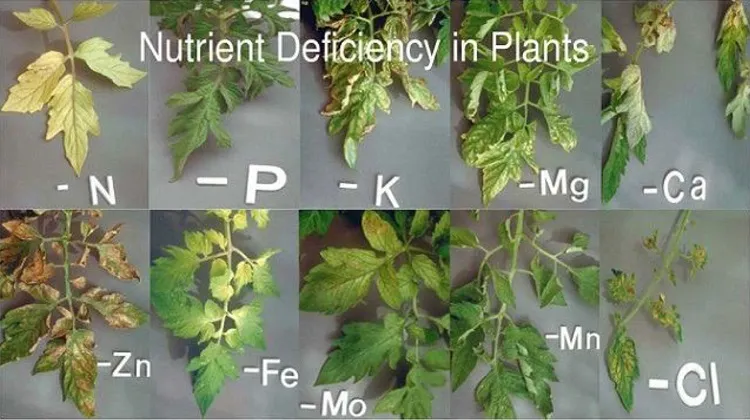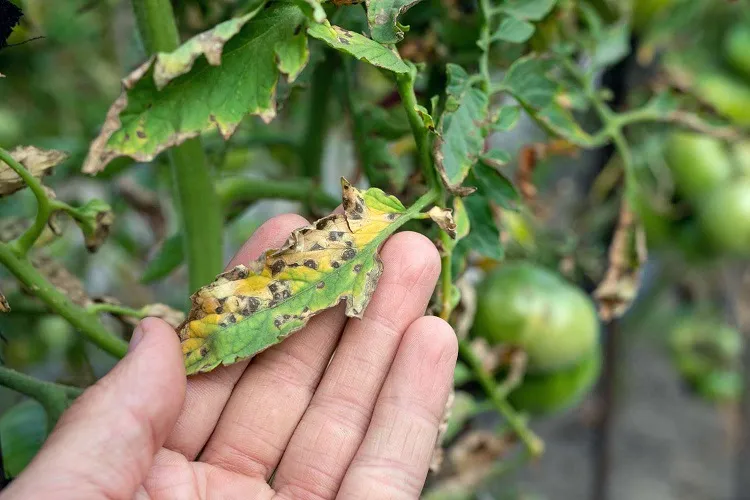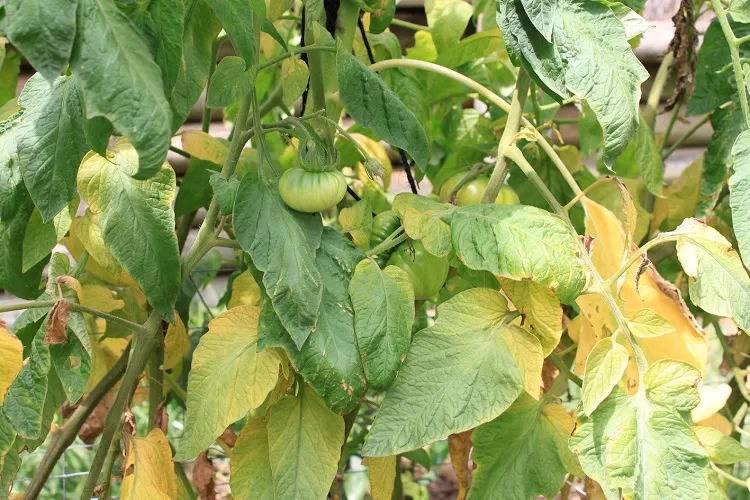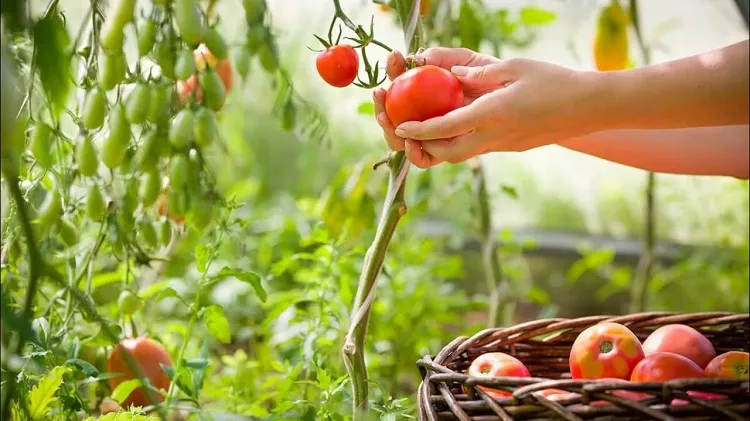If you’re an avid gardener, you probably have encountered the frustrating issue when these tasty red vegetables begin to lose their healthy green color. How to find out the reason why are tomato leaves turning yellow? Indicating the underlying cause is crucial for determining the effective treatment and preventing further damage to your precious plants.
Why Are My Tomato Leaves Turning Yellow?
Yellowish leaves on tomato plants can be a sign of various problems, ranging from nutrient deficiencies to pests or diseases. There are several common reasons for tomato leaves turning yellow condition:
- Insufficient nutrients: Deficiencies in nutrients, particularly in nitrogen, iron, magnesium, or manganese, can cause the change of the leaves’ color. Lack of nitrogen element is often associated with uniform yellowing of older leaves. When yellow color tends to appear between leaf veins, this is due to iron deficiency.
- Not enough water or overwatering: These wrong practices can lead to signs of stress on tomato leaves. When the water is too much, this may cause root to rot and hinder nutrients uptake, resulting in yellowing leaves. On the other hand, underwatering deprives plants of vital moisture, leading to stress-induced yellowing.
- Pests infestation: Tomato leaves turning yellow condition may be caused by several pests, such as aphids, whiteflies, or spider mites, which can change the leaves color.
- Diseases problems: At the same time, diseases like early blight, fusarium wilt, or bacterial spot can manifest as yellow spots or patches on leaves.
Should I Remove Yellow Leaves from Tomato Plant?
While it is discouraging to see tomato leaves turning yellow, it’s important to consider whether removing all of them is necessary. But in general, cutting some of them off is beneficial for the plant’s overall condition and vitality, as there are reasons for this:
- Healthy look: Cutting off yellow leaves improves the appearance of your tomato plants, making them look healthier and livelier.
- Disease relief: A lot of diseases start on lower leaves and gradually spread upward. By promptly removing yellow leaves, you can reduce the chances of fast infesting throughout the plant.
- Resource redirection: Turned to yellow color leaves are no longer producing energy through photosynthesis normally. By cutting off them, the plant is likely to redirect its resources to other healthier parts, and promote their growth and fruit production.
However, it’s a good practice to exercise caution when removing leaves. Avoid cutting off too many of them at once, as this make the plant to experience stress. Focus your efforts on removing only the bad affected or diseased leaves, and ensure your tools are enough clean and sharp to prevent the spread of diseases.
Treating Yellow Leaves on Tomato Plants
The treating measures for tomato leaves turning yellow include addressing the underlying cause. Here are some effective measures to help restore your plants’ health when there is such a problem:
- Nutrient balance: You should test the soil to identify are there any nutrient deficiencies, and then add them accordingly. Nitrogen-rich fertilizers help to overcome yellowing caused by nitrogen deficiency. Applying a balanced fertilizer or adding organic matter like compost can address a lot of other nutrient deficiencies.
- Watering management: Apply water properly by providing with the needed moisture without excess quantities. Moisten deeply, though infrequently, letting the soil dry out slightly between watering sessions. Mulching around plants help to retain moisture and regulate soil temperature.
- Pest and disease control: Inspect your plants for pests or signs of diseases on a regular basis. Apply organic insecticides or good pest management techniques to control infestations. In case of fungal disease, use fungicides, which are formulated for tomato plants, and practice crop rotation to prevent future occasions of this kind.
Read also: DIY Calcium Fertilizer for Tomatoes: How the Home Remedy Helps with Deficiency and Blossom End Rot?
How Do You Revive a Sick Tomato Plant?
When you want to revive a sick tomato plant, you should combine careful care with a timely intervention. There are some steps to follow to increase the chances of its recovery:
- Determine the problem: Find out the exact issue causing the plant’s decline, whether it’s a nutrient deficiency, disease, pests, or environmental stress. The correct diagnosis is the key to the treatment strategy.
- Adjust the needed care: When you already know the problem, provide optimal conditions for the plant’s recovery. Maybe there is a need for adjusting watering, correct nutrition, provide additional sunlight, or implement pest control measures.
- Prune and clean: Cut off the bad affected or diseased parts of the plant, including yellow leaves, branches, or fruits. This allows the tomato to redirect its resources to healthier areas, stopping the fast spread of the disease.
- Provide a stake: If your sick tomato plant is weak and drooping, stake it up. This is important for the plant to regain its upright position, thus improving airflow, and decrease the risk of disease.





